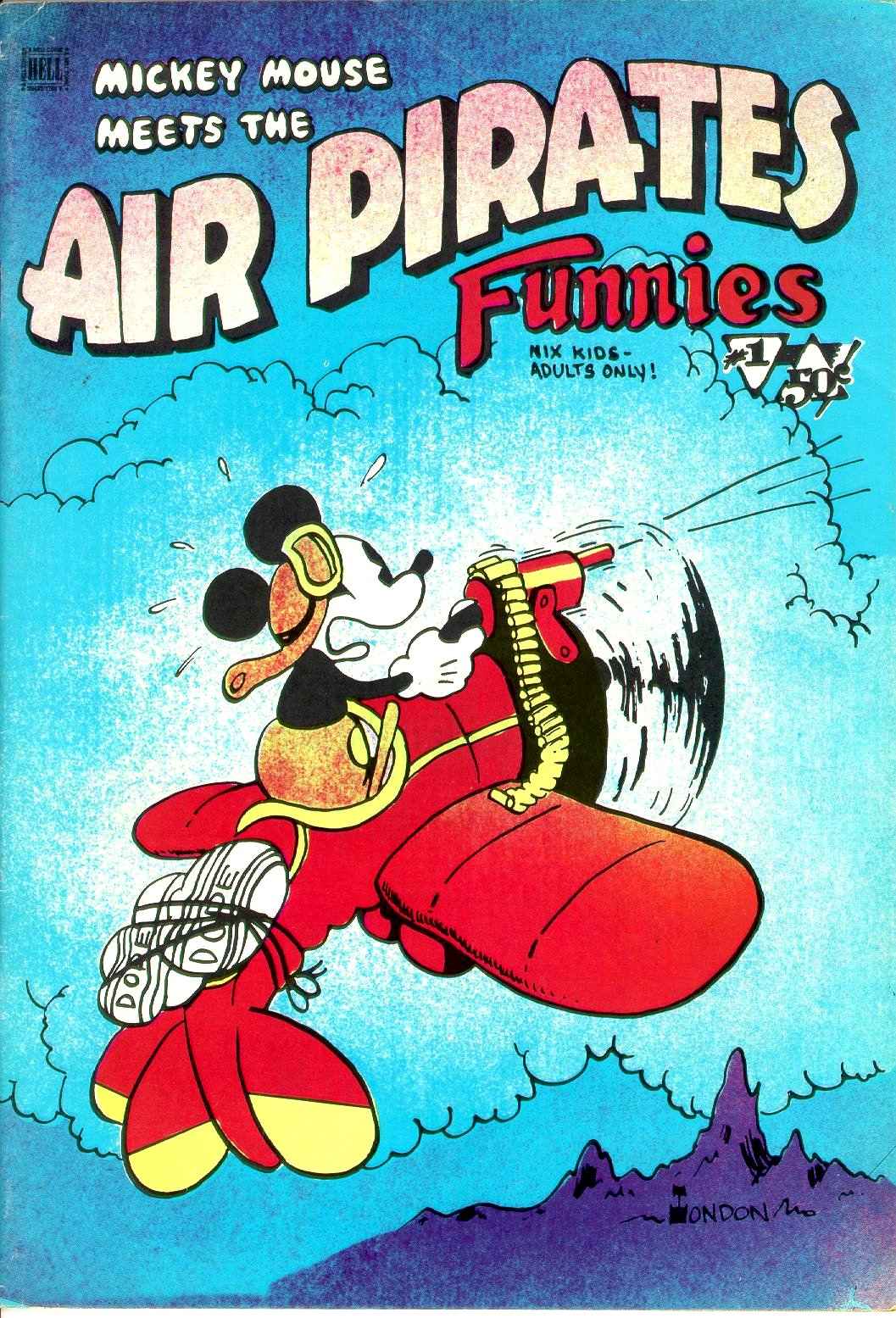air pirates funnies

air pirates funnies
Hell Comics / Last Gasp 1971
Air Pirates was more than just a couple of underground comics, it was a formally named band of artists founded by Dan O’Neill and included Shary Flenniken, Bobby London, Gary Hallgren, and Ted Richards. The Air Pirates made a courageous stand for freedom of expression back in 1971 when they took on corporate America over the rights of artists to lampoon entertainment icons.
They called themselves the Air Pirates in honor of a group of villains who were foils for Mickey Mouse in the 1930s. In real life, the true villains came from the court system, which in the 1970s unfairly ruled against the Air Pirates use of Disney characters under copyright law’s Fair Use Doctrine, a fundamental principle of copyright law that allows the use of copyrighted artwork and chararacters by other parties if the primary objective is the depiction of parody. Which is precisely what the Air Pirates did. If Mickey and Minnie having sex and using drugs isn’t parody, what is?
The origin of the Air Pirates collective began when Bobby London became friends with Ted Richards in the late ’60s, when they both worked as staff cartoonists at the underground newspaper, the Berkeley Tribe. In 1970 they attended the Sky River Rock Festival near Portland, Oregon, where they met Shary Flenniken and Dan O’Neill at the media booth. The fetching 20-year-old Flenniken was producing a Sky River newsletter on a mimeograph machine (she would later marry London, a marriage that lasted several years). All four of the cartoonists formed a friendship and by the end of the 11-day festival they had produced a four-page tabloid comic together, Sky River Funnies (most of it drawn by London).
After the festival Flenniken and Richards went to Seattle, where Flenniken continued her work with the Seattle Liberation Front’s underground newspaper, Sabot. London took off with O’Neill to San Francisco, where O’Neill had a studio and his already-infamous syndicated comic strip, Odd Bodkins. London began contributing a “basement” strip to O’Neill’s primary panels for Odd Bodkins. In early 1971, they reunited with Flenniken and Richards in San Francisco, along with Gary Hallgren (a Seattle cartoonist who also met O’Neill at the Sky River Rock Festival), to form the Air Pirates collective. Hallgren had been part owner of the groundbreaking Splendid Sign Company in Seattle (co-founder Doug Fast designed the Starbucks Coffee logo), and he funded much of the collective’s early projects and activities.
According to Shary Flenniken’s official website: “The real attraction of the Air Pirates odyssey was the salon atmosphere in the series of warehouses occupied by the group. The cartoonists taught and learned from each other almost constantly. There was little food or sleep. They discussed politics and pen points with equal seriousness. They traveled in a protective pack when they went out to forage for meals or a place to take a shower. O’Neill introduced Improvisational Theater exercises that he adapted for writing comic pages. These were emotional, mind-bending tests of the artist’s ability to relinquish their ego in order to participate in a team project. Not all passed. The lessons were not always easy to swallow. One primary edict holds true today… ‘Develop a character and build your comic strip around its characters.’ Shary’s long-running Trots and Bonnie comic strip was a result of that directive, born from memories of growing up in the saccharine Seattle suburb called Magnolia with her dog, Bonnie.”
You can learn more about the controversy here, but the outcome, which played out for years, is rather depressing.
The Air Pirates comic books (there were only two, plus a later tabloid) are not masterpieces of the underground comics era, but they are essential reading for gaining historical perspective on the era and recognizing the dangers inherent to many underground comic creators; and the dangers of censorship to all Americans.


